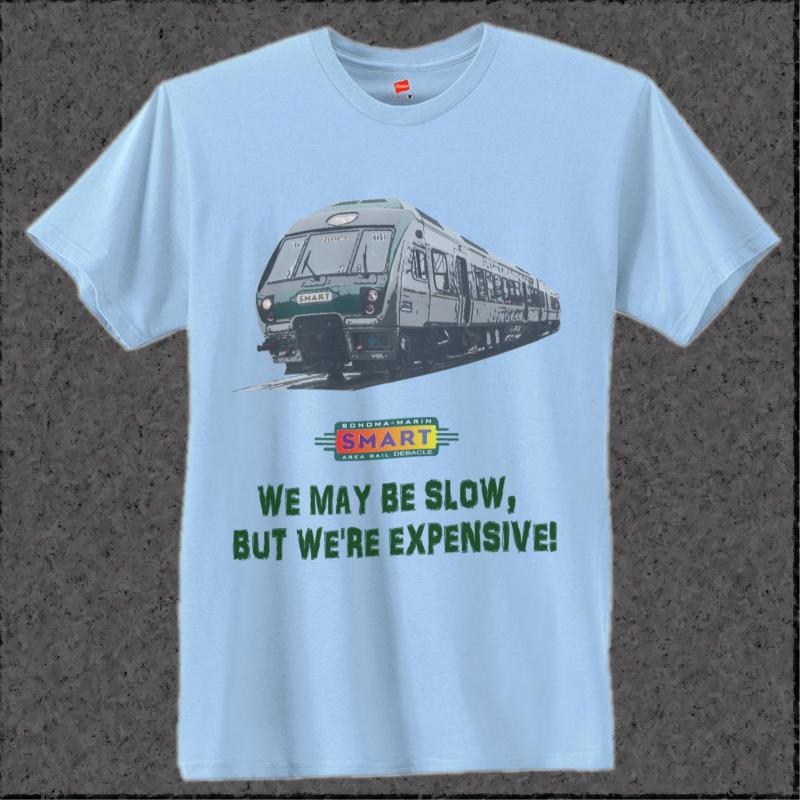The SMART Board of Directors voted unanimously Wednesday to have its staff begin the process of renewing the district’s quarter-cent sales tax on the March 2020 ballot...The district has relied on the quarter-cent sales tax, passed via Measure Q in 2008, to build out and run its rail system, which now spans downtown San Rafael and the Sonoma County Airport. Measure Q expires in 2029, but staffers say it is imperative the tax be renewed well before then. While sales tax revenues have increased through the years, so has SMART’s operational costs and debt payments...
This is the crisis that SMART's critics predicted years ago. The sales tax---which requires a 2/3 vote---was barely passed by Marin and Sonoma County voters in 2008. What will SMART do if voters reject it in 2020?
If SMART chooses to wait until closer to 2029 and the sales tax is not approved, McGrath said, “We’ll have to contract very quickly.” David Rabbitt, a SMART board member and a Sonoma County supervisor, said there is “no alternative” because the tax is the agency’s primary funding source. He added it would also make no sense to include a sunset date for the tax this time. “What are you going to do, mothball the fleet? Unacceptable,” Rabbitt said.
This is the good-money-must-be-thrown-after-bad justification for dumb, costly projects. Robert Caro quotes Robert Moses: “Once you sink that first stake,” he would often say, “they'll never make you pull it up.”
The SMART train may be the exception to the Moses adage, since there's no likely source that would/could fill this funding gap:
Measure Q has generated $289 million in revenue since taking effect in 2009, far short of the growth needed to meet the $890 million the tax was initially expected to generate in its 20-year life. The entire rail build-out was also expected to cost $541 million, but SMART has now spent more than $550 million on a yet-to-be-completed track...Sales tax is expected to account for half of the revenue collected by SMART this fiscal year. By comparison, the revenue derived from charges for services, which include fares and parking fees, was about $4 million, or about 5 percent.
Fares cover less than 5 percent? That's clearly unsustainable, with or without the sales tax money. And when you raise fares, you lose riders.
Even San Francisco's Muni system recovers 18% of its costs from fares (see page 19 here. To compare that with other systems in the US, see Farebox recovery ratio.)
More bad news:
...But while the tax revenue growth has been healthy, as McGrath described it Wednesday, costs are also rising and the district has had to dip into its reserves. For example, the district anticipates spending another $10 million in the next three years to replace brakes, engines and other equipment on its rail cars. Staffing levels have risen from 25 to 121 full-time employees between 2013 and the current fiscal year, with about 20 employees added in the last year alone. SMART is also paying employees more to compete with other transit lines such as BART and Caltrain, McGrath said.
SMART had already taken out $5 million of its reserves to balance the budget this fiscal year, which is something that SMART General Manager Farhad Mansourian said could not be sustained should a sales tax renewal be struck down by voters. Positions and services would immediately be frozen and cut, he predicted, in order to balance the budget.
One of the many commenters to this story suggested that the SMART system could reduce Highway 101 traffic in the area by 4%. That the system would reduce 101 traffic congestion was one of the major arguments in support of the original ballot measure.
In response, commenter/blogger Richard Hall crunched the numbers.
You're giving SMART way too much credit saying they remove 4% of traffic on 101. They can only relieve about 0.6% of the traffic on 101. You're off by 500%.
- SMART has 2,200 riders per day (round-trips), currently declining according to officially reported stats
- just a few peak trains are full but the~82% single track line prevents them increasing frequency due to limited passing spots
- meanwhile highway 101 carries 222,000 cars per day peak at San Pedro Road in San Rafael, multiply that by the US DOT average occupancy 1.67 and you'll see 101 carries 370,740 people per day
- SMART carries 2,200 people per day
- 2,200/370,740 = 0.6%
That makes SMART a rounding error. 101 traffic increases by that much in less than a year.
Labels: High-Speed Rail, Honolulu Rail Project, Marin, Muni, Rail Projects, SMART train


![]()
![]()

![]()
![]()